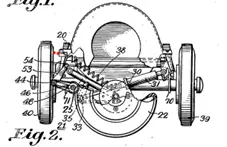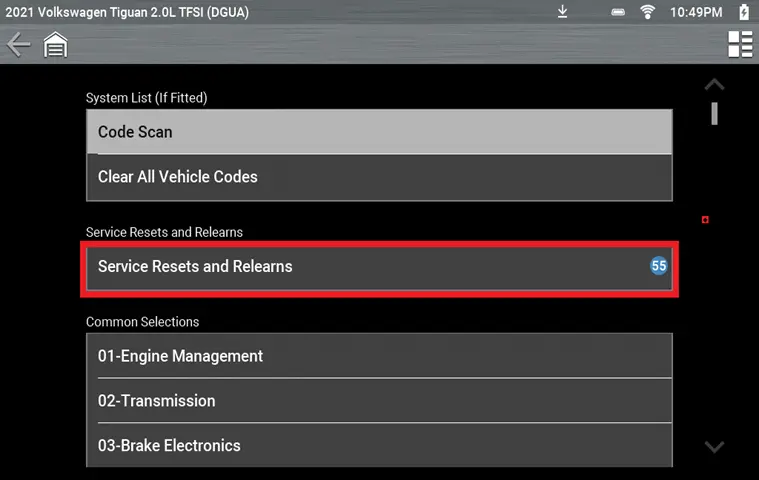I was a 16-year-old boy in the mid-70s, and like all my peers, I could not wait to get my driver’s license. I was not worried about the written test at all, I knew the driver’s manual for the state test like I wrote it. It was the actual driving test with a state trooper sitting beside me that had me nervous. I had attempted to Parallel Park in driver’s education class and that was my worst thing. Being a country kid, I never really got the hang of it.
In the 1930s an ingenious park assist idea called “fifth wheel” was invented. In a nutshell, a fifth wheel drops down from the trunk lifting both rear wheels off the ground. Then the fifth wheel will drive the rear of the car to the curb when parallel parking. It worked the same way when pulling out of the space. A patent (below are the drawings from the patent application) was issued, but it never caught on. It would have cost $175 then, $3,200 in today’s money. The other problem was that the mechanical components took up all the trunk space.


Caption: Figure 2 and Figure 3. Walker, Brooks. Motor Vehicle. U.S. Patent No. 2,139,341, issued December 6, 1938.
Then there was the ever-popular tennis ball on a string to alert you when to stop in your home garage.
Today’s park assistance systems do not require any trunk space and since the cameras and sensors are already present for other Advance Driver Assistance Systems (ADAS) the cost is minimal.
Parking Assistance Systems (PAS) use sensors, cameras and automated controls. In most cases, the same components that ADAS uses.
Passive systems provide audible and tactile warnings to the driver, like the driver’s seat vibrating, for example.
Active systems actually take control of steering, acceleration, and brakes. The three types of active systems include steering assisted parking, the most common; enhanced automatic parking assist, which can automatically park itself into a detected parking space; and fully automated parking that performs all steering, brake and shifts to park, and may even apply the parking brake.
Remote parking systems allow the vehicle to park and unpark itself with no driver aboard.
OEMs offer slightly different versions and name them accordingly. Ford® offers Active Park Assist and Enhanced Active Park Assist. Toyota® has Intelligent Parking Assistant and Nissan® calls theirs ProPILOT. Assist®. Fiat Chrysler Automobiles (FCA) calls theirs ParkSense® and Tesla® is Autopark. Regardless of whichever name is used, it looks like it is here to stay.
When a problem arises, it is the same as diagnosing and calibrating ADAS. Remember, they share the same components.
In this scenario, we have a 2021 Volkswagen® Tiguan® and the rear camera has failed. When the vehicle repair is complete, the rear camera in the ADAS systems needs calibrating to the vehicle.
If we go to service resets and relearns in an up-to-date Snap-on® scan tool, we can find the calibration.

So, we will select replace/calibrate rear camera.
![]()

Keep in mind that certain OEMs require the use of calibration targets as this Volkswagen did.
Park Assist has come a long way since someone invented curb feelers. It probably means successful achievement of autonomous vehicles is very close to becoming a reality. If cars can park themselves without human assistance, it’s just a matter of time when they can drive me to town while I read the newspaper. I am looking forward to that.